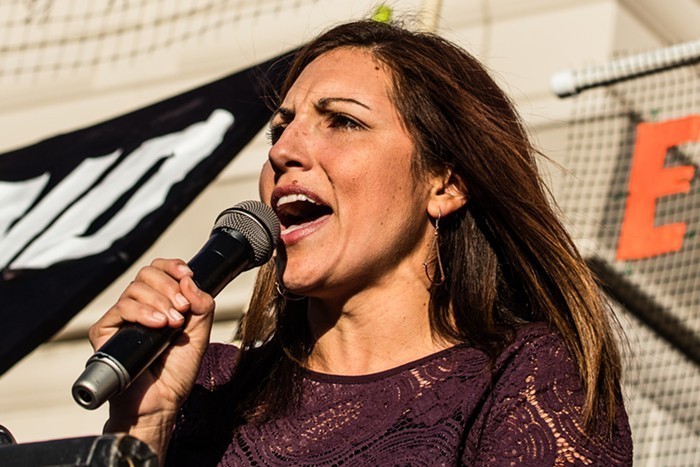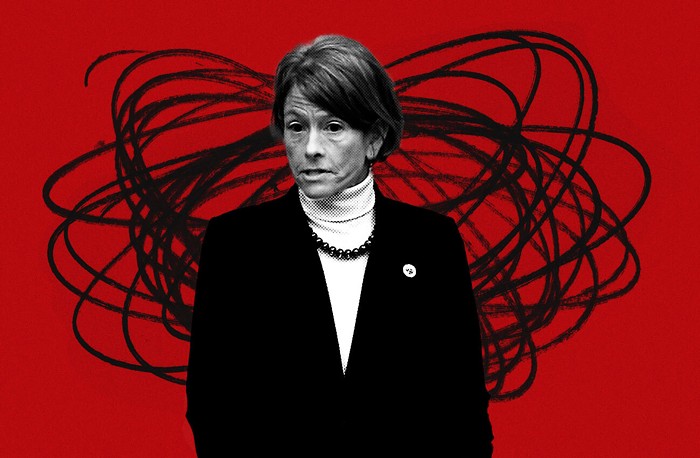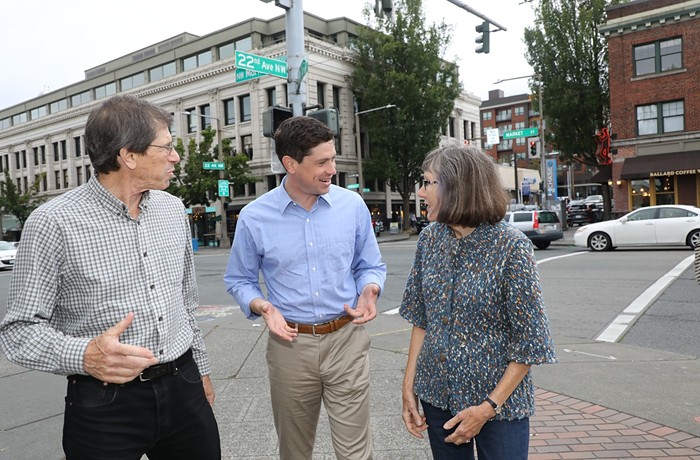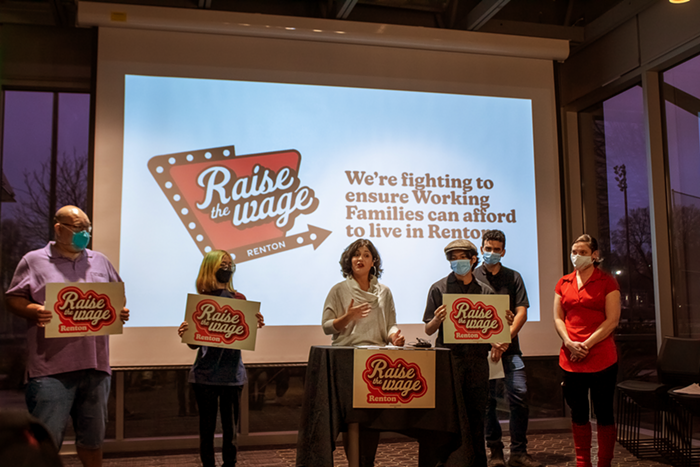The council's Seattle Center vote wisely rejected misleading analogies to New York's Central Park (New York's Coney Island is more like it) and rejected alarmist analogies to giant freeways displacing entire neighborhoods. The monorail will be set back about 150 feet away from the International Fountain, on the far northern edge of the Center's 4.9 acres of green space. Half of that green space is even farther away, on the south side of the fountain. Meanwhile, the monorail will pass by a professional basketball arena, Memorial Stadium, the Fun Forest, and EMP--not by a neighborhood.
That reality check wasn't enough to stop one woman, who gave public testimony before the divided vote, from claiming the monorail would ruin Seattle Center, which she described as a "sacred site." City Council Member Jean Godden, who voted for the through-route, boiled it down, bringing the discussion back to reality: "The Center has never been a place of great meditation. In fact, when I went out there, somebody was drumming. There are kids on skateboards, people playing soccer. This is not a place where anybody is praying."
The council's decision also honored the agreement the SMP struck with nearly 30 major institutions and groups at the Center and in the surrounding neighborhood, such as the Queen Anne Community Council, the Seattle Sonics, the Pacific Science Center, and the Queen Anne/Magnolia District Council. The Seattle Center folks signed an April 6 letter to council imploring the city to send the monorail through the Center, something they saw as a plus for the Center's financial well-being. Judy Whetzel, who serves on the boards of the Seattle Opera and the Seattle Center Foundation, said, "Attracting, engaging, and getting people to the campus is critical to the sustainability of Seattle Center and its ability to earn income."
The vote was also an obvious victory for SMP, which had frantically lobbied council to go with the through-Center route. The agency argued that the route through the Center was more direct than the competing option along Mercer Street and Fifth Avenue North, making it quicker, less expensive, and less disruptive to traffic and plans for fixing the Mercer Mess.
On the other hand: The council's requirement that the monorail run at least 14 feet away from buildings along Second Avenue seemed at first glance to be bad news for the SMP; the agency had been planning to run trains about nine feet from the buildings along the west side of Second Avenue, which would have allowed the agency to save a bike lane and keep three lanes of traffic. (Currently, going west to east, Second Avenue has an 18-foot sidewalk, a bus lane, three general-purpose traffic lanes, a bike lane, and a lane for parking.)
The 14-foot requirement also appeared to be a victory for powerful Second Avenue property owners who are working to stop the monorail (see this week's Five to Four for details on the property owners' anti-monorail lobbying). The property owners have asked for an alignment that would run 14 feet away from buildings, preserve all four lanes of traffic, and remove the bike lane.
The 14-foot requirement, which passed 6-3 after council member Peter Steinbrueck offered the surprise amendment, could put the SMP in a bind. Forcing the agency to move the columns farther away from Second Avenue buildings could load the project with higher costs (navigating around or moving an electric utility bank below the street could add millions of dollars to the project's cost) and bad choices, like nixing a lane of traffic or taking away downtown's only bike lane.
While taking out a lane of traffic might provide ammo for the Second Avenue monorail obstructionists, the option actually puts the Second Avenue property owners (whose real goal, it seems, is to stop the monorail) in a tricky political situation that could expose their disingenuous aims: raise monorail costs to kill the project.
But there could be a silver lining for the SMP: If the agency goes to the public and to enviro council members like Steinbrueck, it can argue that if Second Avenue folks honestly want the train to run 14 feet away from buildings, they shouldn't object to the SMP's own version of the proposal, which would place the columns just east of the electric utility bank (creating wider sidewalks and saving millions) and take out a traffic lane rather than the bike lane. Pro-transit folks like Steinbrueck (not to mention anti-monorail guy Richard Conlin!) will surely support the notion of swapping out a car lane for a public transportation system. "All we get is whining about traffic [capacity]," Steinbrueck says, "but damn it, this is supposed to be about public transportation. If it means reducing traffic capacity, I think that might result in the best solution."
Because they'll be secretly galled that the compromise 14-foot alignment sidesteps the utility bank (keeping the SMP's costs in line), and publicly upset because the idea nixes a traffic lane, the Second Avenue property owners will be in the uncomfortable political position of complaining about getting exactly what they asked for (14-foot separation from the monorail). Their hypocrisy will become obvious when they insist on saving the traffic lane by building the monorail over the utility bank--a seriously complicated bit of work that's likely to close down Second Avenue for 10 years. "Interesting, isn't it," SMP director Joel Horn has said pointedly, "that you've got property owners on Second Avenue who want you to disrupt traffic for up to 10 years on Second Avenue."


















